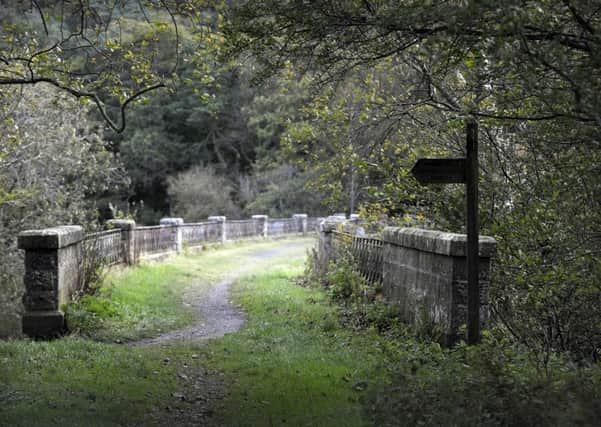Outdoors: The joys of exploring Scotland's disused railways


Browsing most most Ordnance Survey maps of East Scotland will show the legend “Course of Old Railway”. In many areas, there are more of these than there are those in use.
These closed lines, which were almost all opened in the 19th century, fell victim to increased road use and the need for the railways to make a profit. When built, these lines were the equivalent of us today going into space, such was the difference in travelling time they made.
Advertisement
Hide AdAdvertisement
Hide AdThis situation lasted for 60 or so years, until the advent of road transport – particularly after the First World War, when cars, lorries and buses became more prolific. Journeys, especially short ones, could be undertaken more quickly and cheaply by road than by rail.
This made the biggest difference to the shorter branch lines, which lost much of their passenger traffic. Indeed, some of these lines lost their passenger services as early as the 1920s, although most lasted into the 1950s and 1960s.
The Beeching Report in 1962 was the death knell for many lines – not just branches, but also for main lines too – and so, by the early 1970s, the railways in East Scotland were a shadow of their former selves.
Sad as this was (and there is now much regret that so many lines were closed), especially with today’s busy roads, crowded trains and pollution), it was good news for walkers and cyclists. The Scottish Right to Roam Act means that it is possible to explore these closed lines without hindrance.
These closed lines, whether left undisturbed since closure, or converted into official or unofficial paths, provide relatively easy walking and cycling in the country, often far from roads. While most of the large railway infrastructure such as bridges, tunnels and stations is often still in place, it is the smaller things you may find, such as mile and gradient posts and signs, that add interest.
Wildlife also benefits from these closed lines, where both flora and fauna can flourish, undisturbed by traffic and field chemical sprays. In cities, too, closed lines are often turned into cycle tracks, providing a welcome oasis from the hustle and bustle of the city. It’s surprising how much wildlife there is to see even on these city cycle paths.
Winter and early spring are often the best times to walk a line that has gone back to nature, as it is easier to get through any vegetation. However, beware in cuttings as, with no maintenance having been carried out to drainage systems, it can get very wet under foot.
Advertisement
Hide AdAdvertisement
Hide AdAs already mentioned, Ordnance Survey maps are a good way of finding disused railways, but the up-to-date ones don’t usually give the full picture. The National Library of Scotland website has Ordnance Survey maps from the 1920s available to view or download. These show all the lines as they were when they were open, complete with station names. They also show the amount of industrial lines there once were.
In my book, I have strived to show a selection of what can be found on and nearby these disused railways, and what I have presented is just a small part of what is out there. It is aimed at not just the railway enthusiast, but also the walker, cyclist and anyone with a passing interest.
Throughout the text I have referred to the pre-Grouping (1923) railway companies – the Caledonian, North British and Great North of Scotland railways – as they either built or ultimately ran these lines. They all became part of the British Railways Scottish Region at nationalisation in 1948.
In recent months, following the success of the reopened Borders Railway, there have been calls for other disused lines to be considered for reopening, including some covered in my book, and also for converting more disused lines into cycle tracks – all of which can only be a good thing. Only time will tell.
Exploring Disused Railways in East Scotland by Michael Mather is out now, published by Amberley Publishing, priced £14.99.